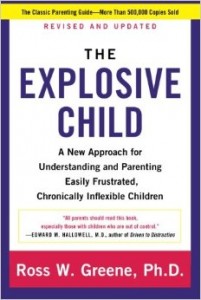Collaborative Problem Solving
“Challenging kids lack SKILL not WILL.”
– Dr. Stuart Ablon at Think:Kids
Who benefits from using Collaborative Problem Solving?
Collaborative Problem Solving is useful for everyone, especially kids who have not done well with typical ‘discipline’ techniques. Kids with these challenges often carry labels such as mood disorder (e.g., anxiety, bipolar), autism, ADHD, and/or behavior disorder (e.g., oppositional defiant disorder). The premise of the program is that all kids do well if they can. So if a child is not succeeding, it’s due to a lagging skill or an unsolved problem that needs to be addressed.
Collaborative Problem Solving is very useful for the following areas of weakness:
- Executive Functioning
- Language Processing
- Emotional Regulation
- Cognitive Flexibility
- Social Skills
Here are some resources to help you learn about Collaborative Problem Solving:
Research on Collaborative Problem Solving.
Lives In The Balance is Dr. Greene’s website on Collaborative Problem Solving.
Here is a video of Dr. Greene describing 3 ways to handle problems.
Think: Kids is Dr. Ablon’s (University of Massachusetts General Hospital) website on Collaborative Problem Solving.
Here is a link to the Assessment of Lagging Skills & Unsolved Problems created by Dr. Greene.
Note: Dr. Arnold regularly uses CPS in session. She has completed Introductory and Tier 1 training with Dr. Ablon’s program: Think:Kids. She will complete Tier 2 training in early 2016.



